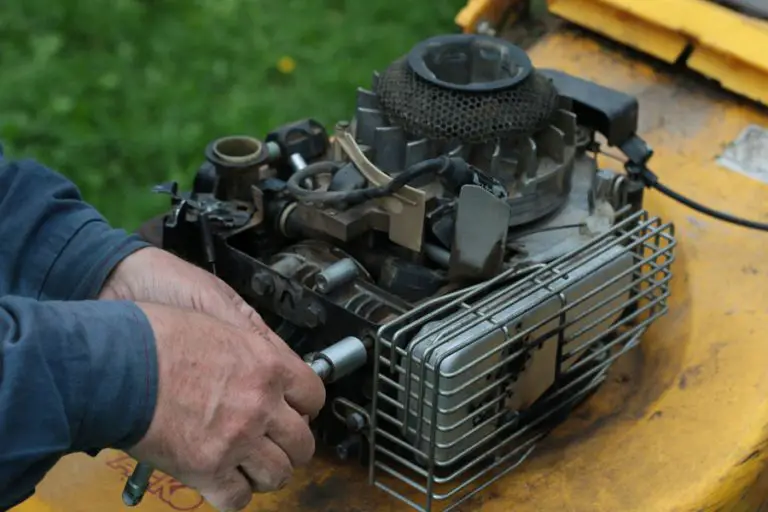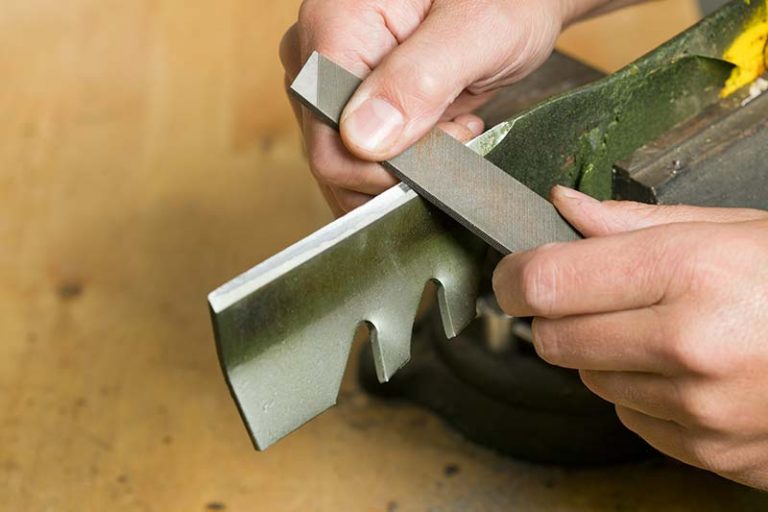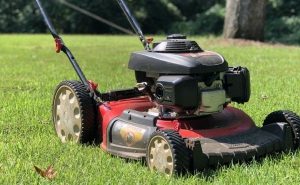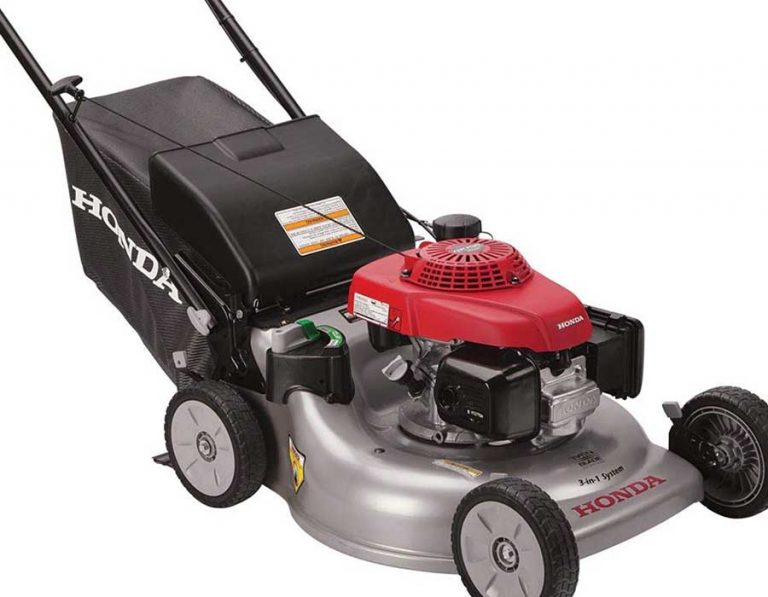How to Tell if a Lawn Mower Spark Plug is Bad
If your lawnmower isn’t working properly or won’t start at all, there can be several reasons for this. Luckily, most times, you don’t have to be an engineer to fix the problem once it has been identified. Lawnmowers with fuel engines use spark plugs to ignite the fuel in their cylinders. So, if your lawnmower won’t start, it’s most likely a result of a bad spark plug. Keep reading to find out how to ascertain if your lawnmower spark plug is bad.
There are several indicators of a bad lawn mower spark plug, most of which can easily be identified. One tell-tale sign that there’s something wrong with your spark plug is when your lawnmower doesn’t start at all. If you have to pull harder and for a longer period before your engine starts, it could be a result of a bad spark plug. Also, if you’re losing power while mowing or using more fuel, the spark plug in your mower needs to be cleaned or changed.
What Does A Spark Plug Look Like?
A spark plug is an essential component of a lawnmower and several other fuel using machines. It provides the spark needed to ignite the air-fuel mixture in the engine of machines. As a result of this, a bad or faulty spark plug in a lawnmower would cause it to malfunction or not start at all.
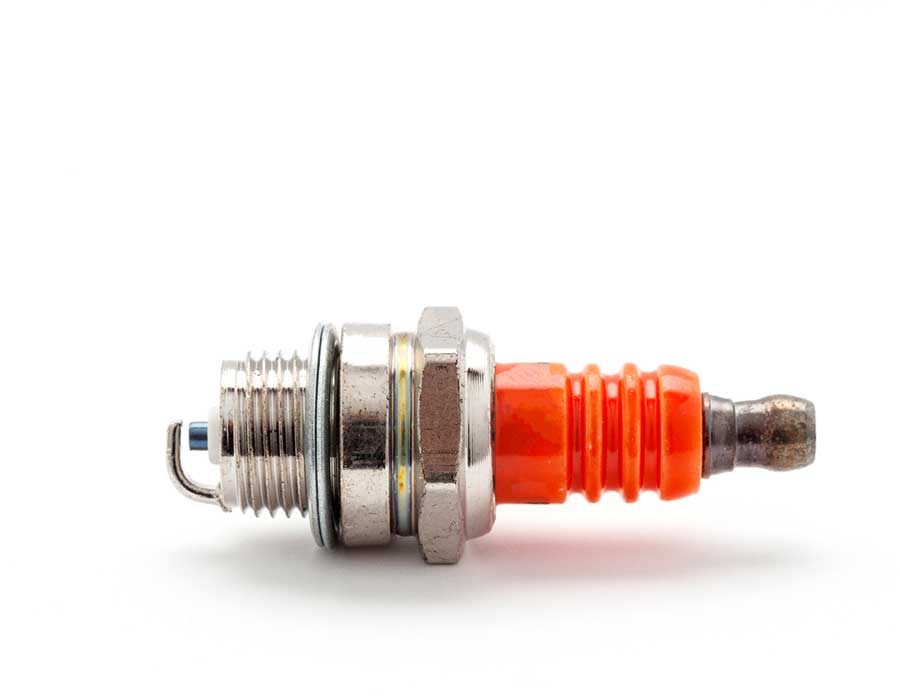
A lawnmower spark plug might go bad for a variety of reasons. Carbon build-up, age, moisture, electrode damage, overheating, and oil deposits on the spark plug are just a few of them. Any of these problems can cause your spark plug to lose its effectiveness or fail. Fortunately, spark plugs are one of the simplest and most inexpensive engine parts to replace.
A spark plug is small and very easy to identify. It’s usually found on the back or side of the engine. What you need to look for is a quarter-inches thick wire that leads to the top of a short cylindrical protrusion from the engine. You would need a handy toolbox to do routine maintenance on your lawnmower.
Spark plugs may look different depending on their state and conditions. A new spark plug definitely can’t be compared to a used one. They would look different and also perform differently. Upon inspection, the following are some of the conditions you might find your spark plugin;
- Normal
- Carbon- fouled
- Wet
- Oil deposits
- Burned
- Worn electrodes
- Broken electrodes
Normal Spark Plugs
The side electrode of a normal spark plug would have brown or greyish-tan deposits. If you open up your lawn mower engine and notice this, your spark plug is in perfect working condition. You can reinstall it and get back to using your lawnmower.
Carbon-Fouled Spark Plug
Black, dried soot on the electrode and insulator tip of a spark plug is an indication that it’s carbon-fouled. There are several factors that can contribute to this. Some of these factors include; a dirty air filter, excessive usage at very low speeds, and not using the machine for a long time. Once you notice this black soot, the damaged spark plug needs to be changed.
Wet Spark Plug
One reason your lawn mower won’t start is a result of a wet spark plug. The effect of this is called flooding. There’s an easy fix for this. All you need to do is clean the spark plug or dry it out and reinstall it. Once this is done, your lawnmower should be back to its perfect working condition.
Spark Plug With Oil Deposits
Oil leakage from the engine can cause oil deposits on your spark plug. If you notice black oily deposits on your spark plug, the oil may be leaking into the cylinders and getting past damaged pistons or valve guides. It’s critical to locate the source of the leak and fix it. After this, the spark plug can be replaced.
Burned Spark Plugs
When a spark plug runs too hot, it burns. This could happen as a result of engine overheating, inappropriate spark plug heat range, or a loose spark plug. Burned spark plugs have blisters on the insulator tips, melted electrodes, and white deposits. Changing the spark plug is the only way to fix this.
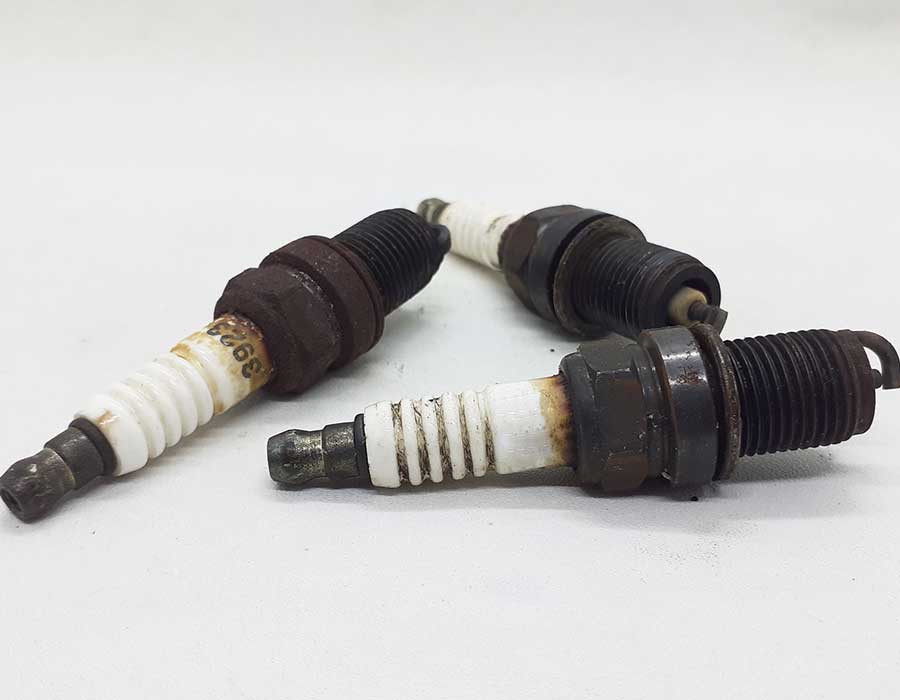
Spark Plugs With Worn Electrodes
Over time, machine parts deteriorate as a result of wear and tear or even lack of usage. A spark plug that’s past its prime would have worn and corroded electrodes. This means that it has been in the engine for an excessive amount of time and it needs to be replaced.
Spark Plugs With Broken Electrodes
There are different types and sizes of spark plugs. Using the wrong size or type for your lawnmower engine can cause damage.
What Does A Spark Plug Do?
A spark plug, despite its small size, performs an important role in any fuel-powered engine. The spark plug in a lawnmower engine performs the same function as the spark plug in a car engine.
It is an electrical device. It has a central electrode and a side electrode. The central electrode is known as the live electrode because it receives voltage from the ignition coil. A high potential difference between the two electrodes is formed when the central electrode receives a high voltage. This allows a flash of current to pass between the two electrodes. This spark ignites the fuel-air mixture in the cylinder of the engine.
If the spark plug is faulty, there will be no ignition or improper ignition.
Symptoms Of A Bad Spark Plug
A bad spark plug would give your lawnmower a lot of problems, but you don’t have to wait till you start seeing signs to check it and do something about it. You should always do a routine check and maintenance to keep it in good working order. However, sometimes, its wear and tear are inevitable. There are a few signs that show that the problem with your lawn mower is from the faulty spark plug. Some of these signs include;
- Lawn Mower Fails To Start:
As previously mentioned, this is one of the most common symptoms associated with a bad spark plug. It produces a spark that’s insufficient to ignite the air-fuel mixture in the engine. As more mixture is poured into the cylinder of the engine, only a small fraction of it is ignited.
Trying to turn on a lawnmower with a faulty spark plug can be completely frustrating, and as such, it should be checked and replaced when faulty.
- Bad Performance:
The machine might eventually come on, but it won’t perform properly if the spark plug is bad. It would keep going off, and you would keep having to restart it over and over. Starting the engine would become more difficult with each subsequent attempt. This is because heat causes metals to expand, widening the space between the two electrodes and lowering the ignition spark’s strength.
- Very High Or Inefficient Consumption Of Fuel:
If it would usually take 5 liters of fuel to completely mow your lawn, and you end up using far more than that, the problem might be the engine’s spark plug.
How To Clean Your Lawn Mower Spark Plug
It’s possible that after inspection, you’ll discover that your mower’s spark plug can be cleaned and reused. This is especially true if you installed it recently and noticed a carbon build-up or oil deposits after inspecting it. There’s an easy fix for this.
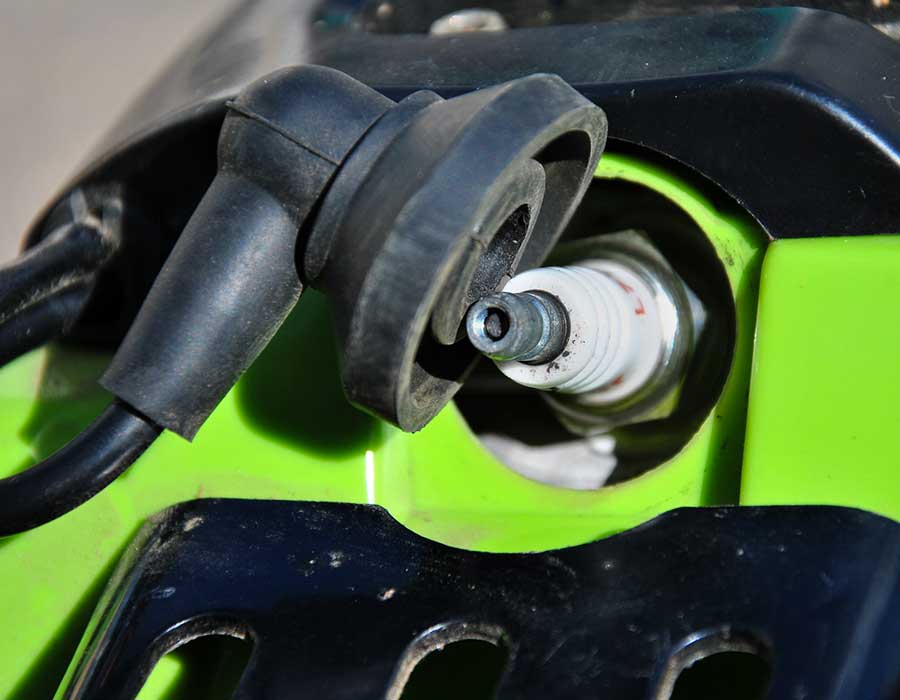
First, you should remove the spark plug from its position on your lawnmower. Then remove any accumulation with a wire brush from your toolbox and an appropriate spray-on cleaner. Make sure that it’s in good working order, with no scorched electrodes or fractured ceramic before replacing it.
Also, you might need to use a spark plug gauge to measure the space between the curved and straight electrodes. Any expansion in the size of the area may necessitate a few changes. This is usually done by using a gauge to gently bend the curved electrode inwards.
FAQS
How Frequently Should A Spark Plug Be Changed?
Spark plugs should be checked routinely during the lawn mower’s maintenance. They should be changed yearly and according to the user’s manual.
What Cleaner Can Be Used To Clean A Spark Plug?
Brake cleaners can be used to clean spark plugs. They are easily available and can be gotten from most automobile parts stores. In addition to cleaning, it evaporates quickly. This allows the spark plug to dry faster after it has been applied. The process is very simple. All that needs to be done is to spray the plug and threads with the brake cleaner and then wipe down any leftover debris using a clean rag.
If your spark plug is dirty, you can combine the wire brush and the brake cleaner to remove the stuck grime and clean it effectively.


